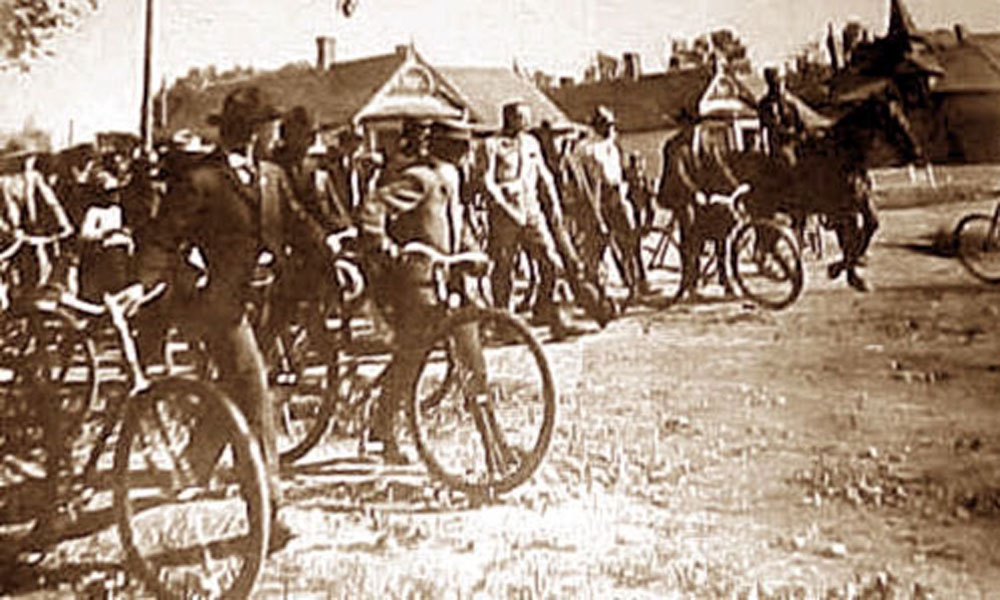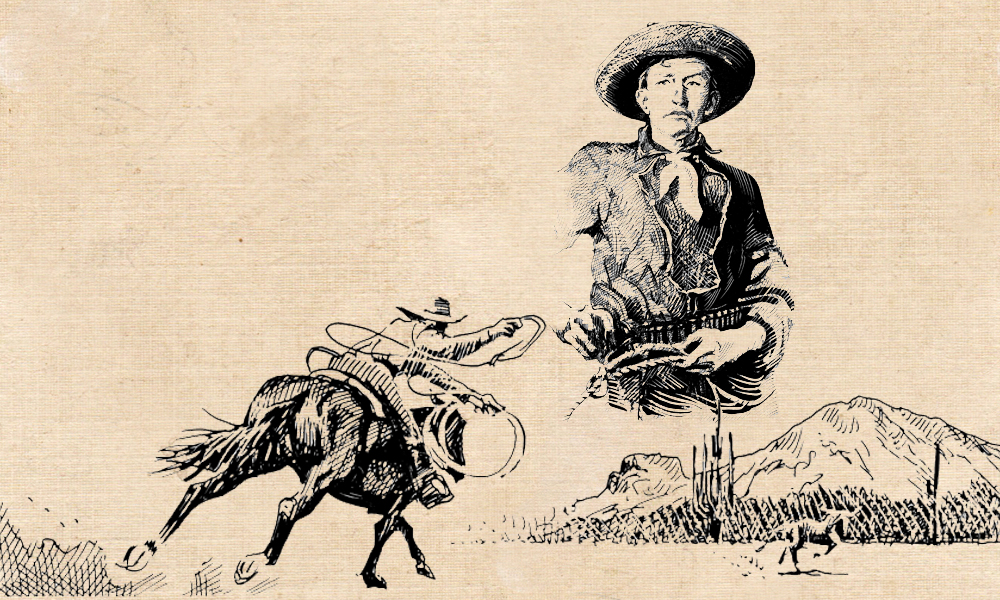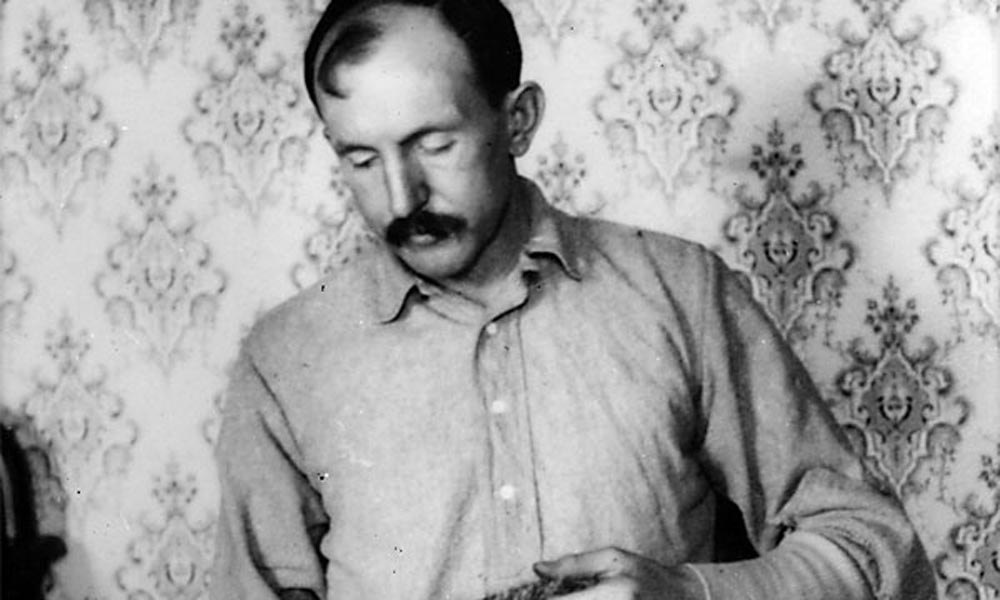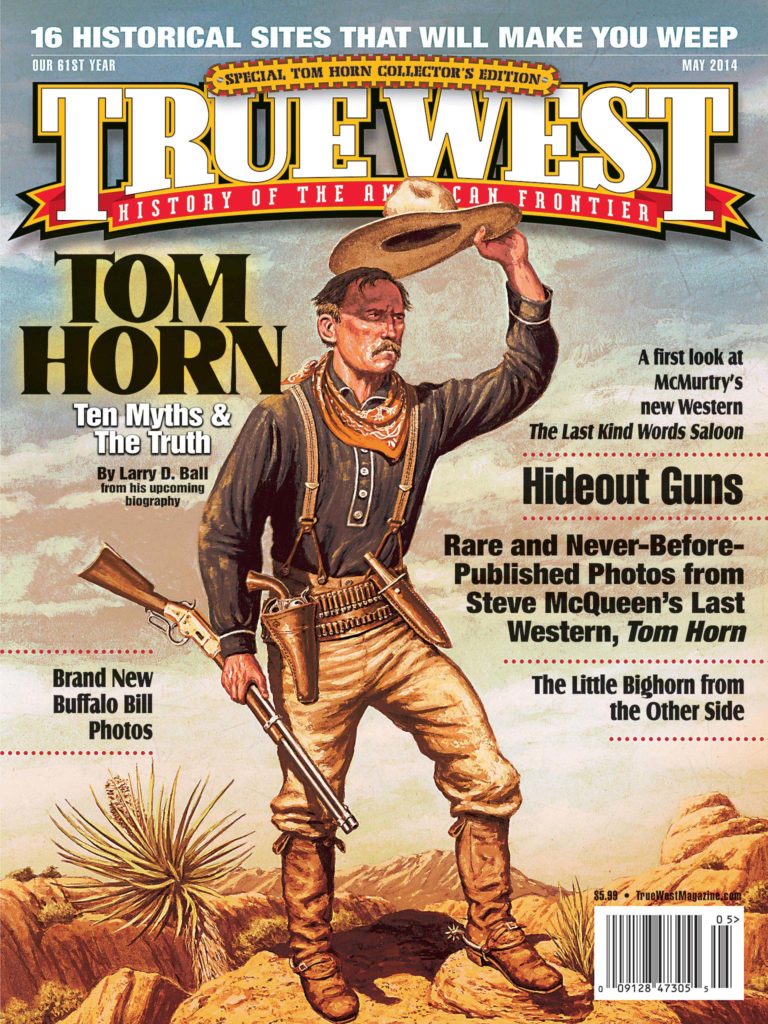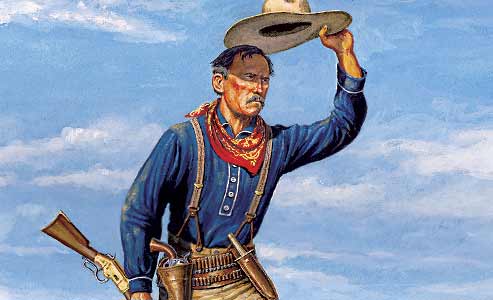
in the field for seventeen months in active pursuit of renegade Apaches. With the deportation of the Chiricahuas, however, Horn left his civilian job with the military and returned to Aravaipa Canyon, which he thought of as home. Not only did he have mining property in the area, but several close friends in the canyon were always ready to offer him hospitality, and employment, among them Burt and Horace Dunlap, Dan Ming, and Elias A. Jones. In fact, he went directly into the employ of the Ming-Jones outfit in October 1886 and remained with them until early 1888, at which time he became foreman for the neighboring Dunlap spread, where he spent most of 1888 and part of the year 1889. Since work as a cowhand was often seasonal, Horn also worked roundups on other ranches, including the Chiricahua Cattle Company in the Sulphur Springs Valley. Indeed, Horn’s “standing as a cow hand,” recalled Horace Dunlap, was such that “he had a choice of employment” on any spread.
The pursuit of “color” had been one of Tom Horn’s primary goals when he arrived in Arizona Territory, and he undertook various mining ventures, both alone and with partners. Most of his prospecting took place in the Deer Creek Mining District, which lay along the southern margin of the San Carlos Reservation, in the Santa Teresa Mountains, and farther south, in the Aravaipa Mining District. Initially, prospectors were enthusiastic about the Deer Creek District. In July 1888, the Tucson Weekly Star reported that the “veins of mineral ore” in this district were promising. In one mining venture, Tom Horn partnered with John P. Harr, a Willcox barber; Wid Childress, a cowhand; and Burt and Horace Dunlap in developing a mine near present-day Winkelman. When Horn needed ready cash for this venture, he worked as a mucker in the Aravaipa Mine or the Grand Reef Mine. The result was a valuable digging that the investors named the Ore Hanna Mine.
In the midst of these endeavors, Horn received a visit from friends who resided in Pleasant Valley, in the northeastern corner of the Tonto Basin. These friends believed that his scouting and Indian fighting experiences would be of use in suppressing an outbreak of violence in their region—the Tewksbury-Graham Feud or Pleasant Valley War. This conflict began as a vendetta. On one side stood the family of James D. Tewksbury, Sr., and his followers; on the other, Thomas H. Graham and his followers. This was not a typical range war such as the struggle between big ranching companies and small homesteaders in Wyoming in which Tom Horn would later become involved. The feuding factions in Pleasant Valley were modest settlers running small herds. As in many feuds, the starting point of the conflict was soon forgotten in the
ongoing bloodshed.
While there had been minor shooting incidents between members of the two families in the early 1880s, the Tewksburys prompted an outcry in 1885 when they introduced a large flock of sheep onto traditional cattle ranges in Tonto Basin. (The owners of these sheep, Peru P., William A., and John F. Daggs, who resided in Flagstaff, had been near neighbors of the Horn family in Scotland County, Missouri, and one can only wonder if the Daggs brothers had something to do with Tom Horn’s invitation to Pleasant Valley.) The Grahams were not blameless in the Pleasant Valley War, being accused of participating in a far-flung rustling enterprise that extended from the Navajo lands in the north to Mexico in the south. These grievances erupted into open warfare in 1887, forcing the residents of Pleasant Valley and vicinity to choose sides. The killing began in February when one of the Daggses’ shepherds was mysteriously shot. In July, Martin “Old Mart” Blevins, a Graham partisan, disappeared without a trace. In the course of the next six months at least twenty people died violent deaths. “Although the feud is often described as a conflict between cattlemen and sheepmen,” historian Gary L. Roberts rightly concludes, “prejudice and irrational hatred . . . kept the war alive.”
In the Life of Tom Horn, the author’s cryptic remarks about his participation in the Pleasant Valley War left only questions and no answers:
Early in April of 1887, some of the boys came down from the Pleasant Valley, where there was a big rustler war going on and the rustlers were getting the best of the game. I was tired of the mine and willing to go…. Things were in a pretty bad condition. It was war to the knife between cowboys and rustlers, and there was a battle every time the two outfits ran together. A great many men were killed in the war…. I was the mediator, and was deputy sheriff….
While the identity of this Pleasant Valley delegation is not known, Horace Dunlap declared that John Rhodes “sent for Horn.” Rhodes, who had worked with Horn at San Carlos, was now foreman for John C. Shields’s PK Ranch in Pleasant Valley. He would soon marry the widow of John Tewksbury, who was a victim of the feud. Edwin (Ed) Tewksbury, who became acquainted with Tom Horn during the 1882 Apache campaign, could well have been a member of the delegation.
There is some question about the date—April 1887—that Tom Horn said he traveled to the Tonto Basin. Some writers, including Dan L. Thrapp, believe him. Thrapp has speculated that Horn may have been responsible for the disappearance of Martin Blevins, who vanished in July of that year. Thrapp based this theory upon Horn’s remark to a Wyoming deputy U.S. marshal in 1902 that he killed his first man at the age of twenty-six and that his victim was “a coarse old sonofabitch.” However, the testimony of Elias Jones, Horace Dunlap, and other Aravaipa cattlemen indicates that Horn was working there throughout 1887. Burt Dunlap recalled that Horn “was absent for a few months” on business in the Tonto Basin in 1888, and William Clay Colcord, a Pleasant Valley rancher who also knew Horn, declared that he arrived there that year.
That Tom Horn went to Pleasant Valley as a “mediator” is also highly questionable, although some of his friends believed him. Al Sieber, who was aware of Horn’s residence in Pleasant Valley, declared that Horn had refused to align with either of the feuding factions “although every inducement was offered him.” Horace Dunlap asserted that Horn kept “clear of any connection with either faction” and that his purpose was to assist John Rhodes in maintaining “an armed neutrality and protect his employer’s interests,” as well those of Mrs. Al Rose, whose husband had also been killed. The truth was that Tom Horn, as a close friend of John Rhodes and Ed Tewksbury, could not avoid taking sides. Walter Tewksbury, a grandson of James Tewksbury, Sr., insisted that Horn “positively took an active part in the war.” However, by the time Horn arrived, most of the Graham faction had been killed or expelled, and enough of the Tewksbury faction remained alive to dominate Pleasant Valley. Bill Colcord’s assertion that Horn’s purpose was to assist in the “clean up [of] the Valley after Graham & Tewksbury had quit” fighting makes sense.
Just what official credentials, if any, Tom Horn carried to Pleasant Valley is also uncertain. He boasted that he represented three sheriffs simultaneously—William “Buckey” O’Neill of Yavapai County, Commodore Owens of Apache County, and Glenn Reynolds of Gila County—which was impossible. Owens was in office in 1887 and 1888, O’Neill in 1889 and 1890, and Reynolds in 1889. Crossdeputization among frontier lawmen was common, however, and it is possible, as Horace Dunlap later asserted, that Horn carried two deputy sheriffs’ badges, representing Sheriff George E. Shute of Gila County (1887–88) and Sheriff William J. Mulvenon of Yavapai County (1887–88). These two districts had primary responsibility for law enforcement in the Tonto Basin. Horn may also have carried another appointment that he did not care to mention, that of range detective. In researching the Tewksbury-Graham Feud, Earle R. Forrest encountered old-timers who insisted that Horn “was employed as a detective or spy by someone.” Some years later, Tom Horn’s brother, Charles, informed the Denver Times that Tom was “employed as a detective by prominent cattle and sheep men in Arizona.” Tom Horn later admitted to a Denver newspaper that he had killed men in various venues in Arizona: as an army scout, as a detective, and as a “regulator” in a campaign against cattle thieves. However, he insisted that these killings were “always in the interest of somebody else,” presumably meaning prominent cattle- and sheepmen (or an association) in the Tonto Basin.
Conditions in the Tonto Basin were certainly ripe for a range detective in the late 1880s. The rustling problem extended beyond the basin, as wielders of “the sticky rope” plied their trade throughout eastern Arizona. To the east, in Apache County, ranchers formed the Apache County Stock Growers’ Association, with a view to launching a concerted effort against these desperadoes. Will C. Barnes, a former soldier and an acquaintance of Tom Horn, served as secretary of this organization. In November 1886, association members were instrumental in getting their “law and order” candidate, Commodore Perry Owens, elected sheriff of Apache County. This same organization also employed an especially aggressive detective, Jonas V. Brighton. In 1887, Brighton killed two rustlers, one of whom was Isaac (Ike) Clanton, of the notorious Cochise County band of outlaws. While there is no indication that Horn and Brighton were acquainted or worked in concert, their areas of responsibility were so close together that local residents sometimes confused the two. The two men were much alike—noisy and boastful—according to one writer, and “some gossips said that Brighton was actually the loud-mouthed Tom Horn,” though the writer points out that a self-promoter like Horn would not have wanted to be confused with anyone else.
Upon arriving in Pleasant Valley in 1888, Tom Horn conducted himself much as a range detective might be expected to operate. He adopted the guise of a cowboy and horsebreaker, a strategy he would later employ in Colorado and Wyoming. Indeed, Al Sieber, who may not have been aware of Horn’s real mission, understood that he “went to work in Pleasant Valley as a ranch hand.” Bill Colcord, a common cowhand at this time, worked roundups with Horn and Ed Tewksbury. One especially difficult job that Horn undertook was a horsebreaking stint for Silas W. Young, who had taken over the ranch of feud leader Tom Graham when he left the basin. These were wild Oregon horses, according to Bill Young, son of Silas. Horn “put on quite a show as he ‘took the rough’ out of them,” recalled Bill. The stalwart Horn, who was able to break “the big rank Oregon broncs with ease,” added Young, broke a “big, beautiful bay” especially for the youngster.
By the time Tom Horn arrived in the Tonto Basin, livestock men had formed a vigilante organization, the Committee of Fifty. Jesse W. (Bud) Ellison, owner of the Q Ranch near Payson, and his foreman, Glenn Reynolds, were reportedly the leaders. Many years later, Ellison justified his action by observing that “where you have these wars, always there’s got to be a cleaning-up process [afterwards]”—Tom Horn’s alleged purpose in the basin. If suspected thieves failed to leave on the vigilantes’ first warning, according to a St. Johns newspaper, “then comes the Regulators’ hideous carnival—the dangle of death.” While the vigilantes claimed that they belonged to neither of the feuding factions, several members of the Tewksbury faction, including John Rhodes and Ed Tewksbury, were members of the Committee of Fifty. Tom Horn was soon a member, not only because his friends belonged, but because he had grown close to Glenn Reynolds, a vigilante leader. Some Tonto Basin residents, who feared Reynolds as a dangerous type, soon grew to fear Tom Horn as well. John Henry “Rim Rock” Thompson, a Pleasant Valley rancher and fellow deputy sheriff with Horn at this time, recalled that many people considered Horn and Reynolds “killers.” On 11 August 1888, vigilantes hanged three suspected rustlers—James Stott, James Scott, and Jeff Wilson—just inside the Apache County border. According to Joseph Fish, a local historian, Reynolds and Horn were unquestionably among these regulators.
The survivors of this grisly vendetta were very wary of outsiders, as Lt. Leonard Wood found out. When Wood and a detachment of Fort Apache scouts entered the Tonto Basin to locate heliograph stations in August 1888, “A bunch of mounted men…came into camp and were rather on the fight,” he noted in his diary. Wood began to talk with the leader, who turned out to be John Rhodes, “a great friend of Tom Horn.” Once Rhodes learned of Wood’s connection to Horn, he graciously permitted Wood to continue on his way….
In the meantime, important changes were taking place in the Tonto Basin, where Deputy Sheriff Horn continued to reside. In November 1888, Glenn Reynolds was elected sheriff of Gila County. When Reynolds took office in January 1889, he persuaded Horn to stay on as his deputy in the far northern precincts. In March, the Arizona Territorial Assembly annexed to Glenn Reynolds’s jurisdiction that portion of Yavapai County in Tonto Basin that was affected by the recent vendetta, thereby increasing the responsibilities of Reynolds’s deputies in this region, Tom Horn and “Rim Rock” Henry Thompson.
In October 1889, Tom Horn entered the steer-tying event at the annual territorial fair in Phoenix. Rivalry was keen “among the cowboys all over the Territory,” recalled Horn, and “Charley Meadows…was making a big talk that he could beat me.” Apparently, the “boys” in the sheriff’s office in Globe, who were anxious to wager on Horn, persuaded Sheriff Reynolds to give him time off to attend. When the two cowboys squared off against each other before “a huge crowd” on 17 October, Tom Horn won handily, with the remarkable time of one minute, nineteen seconds; Arizona Charlie followed with a distant two minutes, six seconds….
While Tom Horn was in Phoenix, in October 1889, the Apache Kid and four associates were convicted of the assault on Al Sieber and sentenced to seven years in the territorial prison in Yuma. In recalling these events, Tom Horn claimed that Reynolds originally intended for him to serve as Apache interpreter at these court proceedings, but instead permitted him to attend the Territorial Fair. On 1 November 1889, Reynolds, with Deputy William D. “Hunkydory” Holmes, set off with the prisoners for the railroad at Casa Grande, ninety miles away. En route the following day, the Apache Kid and his fellow prisoners, speaking in their native tongue, which the lawmen could not understand, concocted an escape plot that resulted in the deaths of Reynolds and Holmes.
Tom Horn expressed great regret at not being present with Reynolds and Holmes. He believed that his knowledge of the Apache language would have enabled him to prevent this tragedy. “I won the prize roping at the fair,” he continued, “but it was at a very heavy cost.” However, there was something amiss in Horn’s assertion. The steer-tying event took place on Thursday, 17 October 1889; the lawmen were killed on 2 November, two weeks after the contest. Horn could have easily traveled to Globe in time to accompany Reynolds, had the sheriff requested his assistance. With the death of Glenn Reynolds, Undersheriff Jerry Ryan assumed the helm, and Tom Horn’s deputyship came to end. “In the winter [1889–90] I again went home” to Aravaipa Canyon, he recalled.
Although his duties as a deputy sheriff (and possibly as a cattle detective) in Pleasant Valley occupied only parts of two years, these experiences were important in setting the stage for his subsequent career as a Pinkerton operative and a range detective in Wyoming. These activities also marked the beginning of a change in the former scout’s conduct— from warring against hostile Apaches on behalf of the U.S. government to hunting down white livestock thieves on behalf of the big cattle companies. In other words, he was now hunting his
own kind.


